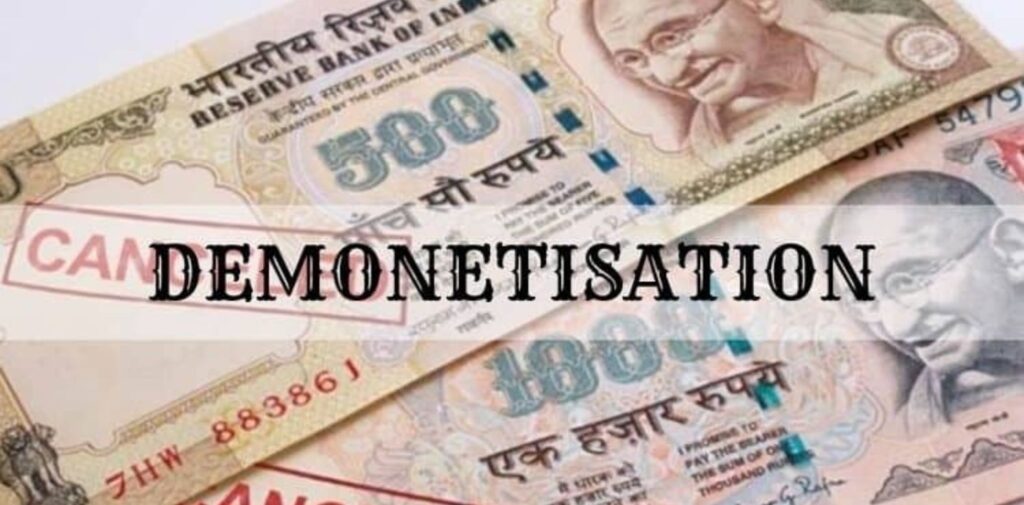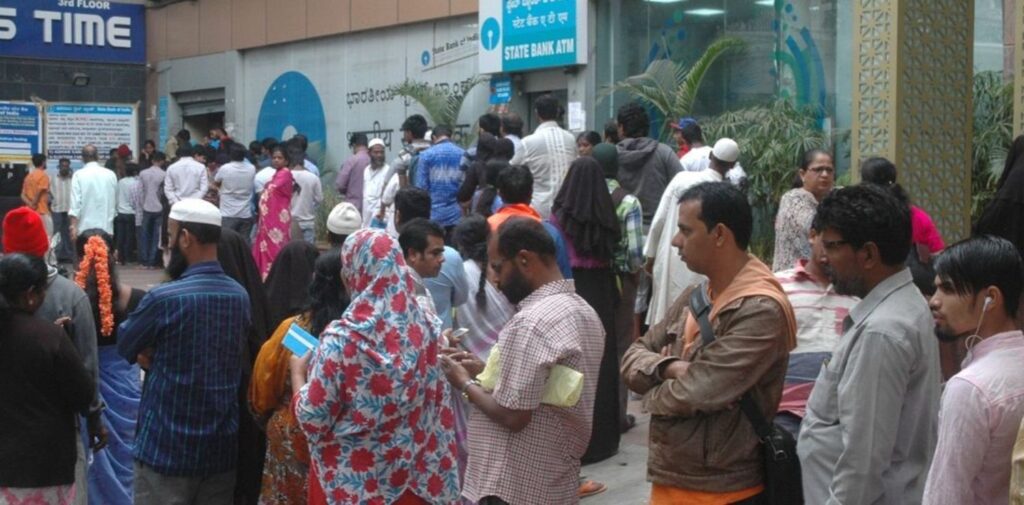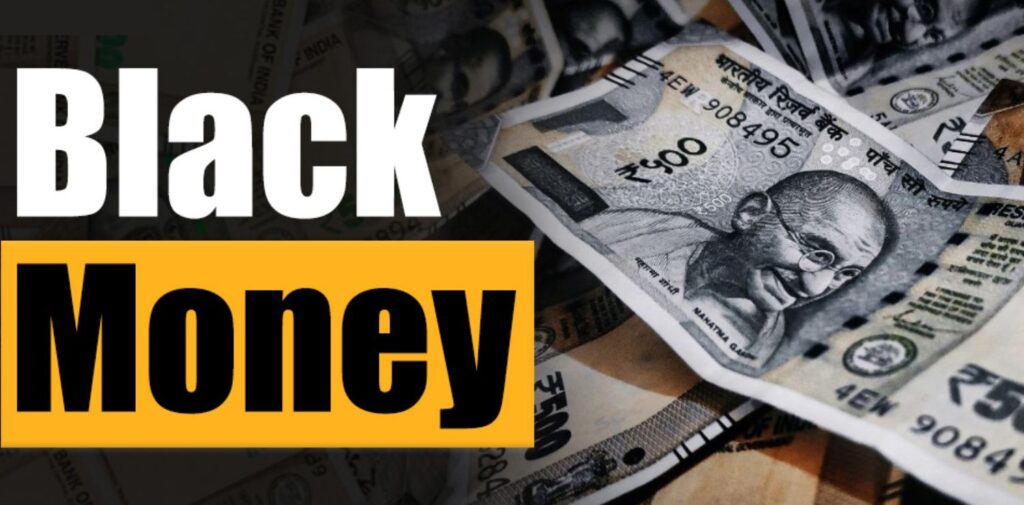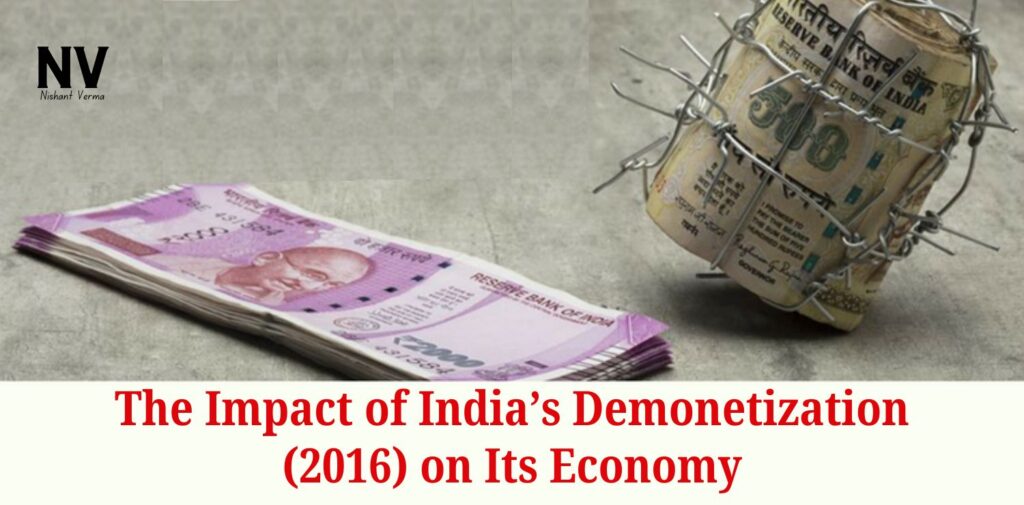In November 2016, India witnessed one of the boldest economic moves in its history: the demonetization of ₹500 and ₹1,000 currency notes. This sudden announcement by the Indian government shook the country and raised numerous questions. What was the purpose behind demonetization? What impact did it have on the economy, both in the short and long run? And did the consequences align with the intended goals?
In this article, we will explore the The Impact of India Demonetization (2016), its effects on the economy, and whether it achieved the intended outcomes.
What Was Demonetization?
Demonetization refers to the government’s decision to invalidate certain denominations of currency. On November 8, 2016, Prime Minister Narendra Modi announced that ₹500 and ₹1,000 notes, which accounted for 86% of the currency in circulation, would no longer be considered legal tender. People were given a window to exchange their old notes for new ₹500 and ₹2,000 notes or deposit them in banks.
The immediate reason behind demonetization was to combat black money, corruption, counterfeit currency, and the funding of illegal activities. The government believed that demonetization would push people towards digital payments and bring more of the country’s economy into the formal financial system.

Initial Challenges Faced by the Public
The announcement of demonetization led to a chaotic situation across the country. Long queues formed outside banks and ATMs, as people rushed to exchange their old notes. The shortage of ₹100 and ₹50 denominations created additional frustration, and many people were unable to withdraw sufficient amounts of cash.
Small businesses, particularly those in rural areas, were hit hardest. Cash is a critical element in India’s informal economy, and the sudden lack of currency made transactions difficult. Many people, especially in rural areas, struggled with the transition to digital payment methods, which were not as widely accessible as in urban areas.
Farmers, daily wage laborers, and small traders experienced significant hardship, as their income largely relied on cash transactions. The immediate aftermath was a dip in economic activity, which led to a decline in GDP growth during the quarter.

Short-Term Impact on the Economy
In the short term, demonetization caused major disruptions in India’s economy. The immediate impact was a slowdown in economic growth. According to reports from the Reserve Bank of India (RBI), India’s GDP growth rate fell sharply in the months following demonetization, particularly in the informal sectors. Many industries that rely heavily on cash transactions, such as agriculture, construction, and retail, experienced a slowdown.
The banking sector also faced difficulties. While the government encouraged people to deposit their old notes into the banks, the sudden inflow of money created a massive workload for the banking system. ATMs had to be recalibrated to accommodate new ₹2,000 notes, and the process of exchanging old notes was slow and cumbersome.
Long-Term Impact on Digital Payments
One of the key objectives of demonetization was to promote digital payments. The government hoped that by making cash less readily available, people would be forced to adopt digital payment methods. In the months following demonetization, there was indeed a significant rise in digital transactions.
The use of mobile wallets, like Paytm and PhonePe, saw an increase. People who were previously reliant on cash started exploring digital methods for their day-to-day purchases. The government also introduced various incentives to encourage people to adopt digital payments, such as tax rebates for businesses accepting payments via digital methods.
In the long run, demonetization helped raise awareness about digital payment systems, and many businesses, both large and small, began integrating digital payment options. However, it is important to note that the digital payment infrastructure still faces challenges, especially in rural areas, where access to the internet and smartphones is limited.
The Battle Against Black Money
One of the major goals of demonetization was to combat black money, or income that is not reported to the government. The government hoped that by invalidating high-denomination currency, it would flush out large sums of black money that were hoarded in cash form.
While there were some reports of large amounts of cash being deposited in banks, the impact on black money was less clear. Many people used methods like gold, real estate, or shell companies to launder their unaccounted wealth, making it difficult for the government to completely eradicate black money. Additionally, some reports suggested that much of the currency that was demonetized eventually found its way back into the banking system, which means the amount of unaccounted wealth that was effectively wiped out was less than expected.
The long-term effect on black money is still a subject of debate. Although demonetization did put a temporary dent in cash hoarding, the overall impact on reducing black money might not have been as significant as the government anticipated.

Impact on Employment and Informal Sector
The informal sector, which comprises small businesses, vendors, and daily wage workers, is a vital part of India’s economy. This sector relies heavily on cash transactions. The sudden demonetization severely impacted these workers, leading to a temporary loss of income and jobs.
Small businesses faced a decline in sales due to the reduced availability of cash, and many businesses had to shut down or lay off workers. The construction industry, which is largely dependent on daily cash payments, also suffered.
However, over time, the informal sector adapted to the change. Many businesses started accepting digital payments, and some of them recovered from the initial shock. The government also took steps to support these sectors, such as easing tax compliance and providing loans to small businesses. But the recovery was uneven, with rural areas taking longer to adapt than urban centers.
Conclusion: Impact of India Demonetization
The overall Impact of India Demonetization is complex and multifaceted. While some goals, such as encouraging digital payments, were achieved in the long run, the immediate consequences were harsh for many people, particularly those in the informal economy. The short-term disruptions caused significant challenges, but the economy eventually started to recover as people adapted to the changes.
Demonetization did succeed in raising awareness about digital payment systems, but its effectiveness in tackling black money and corruption remains debatable. The cashless economy was promoted, but a large section of the population, especially in rural areas, still faces barriers to fully embracing digital transactions.
Ultimately, demonetization was a bold move that created both positive and negative outcomes. It may have had its flaws, but it also pushed India toward a more digitized future. Whether it was a complete success or not depends on how one weighs the long-term benefits against the short-term hardships faced by the public.
In the years that followed, the debate over demonetization’s effectiveness continued, with economists and analysts divided on its impact. Nevertheless, it remains one of the most significant events in India’s economic history, shaping the country’s financial landscape in ways that are still being evaluated today.




